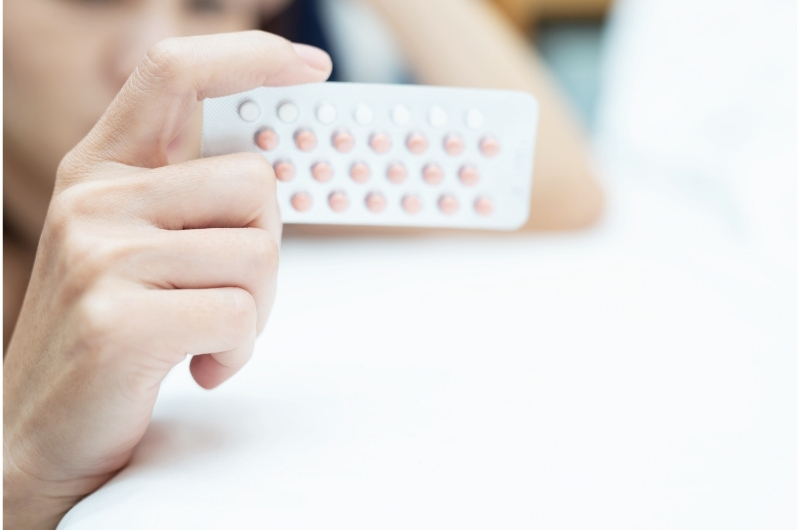Vitamin C is a powerful antioxidant that protects the body from harmful free radicals that damage the cells. Rose hips are the fruits of the Rosa plant. They have the highest vitamin C among vegetables, fruits, and horticultural crops. Vitamin C with rose hips is an antioxidant supplement that improves the immune system by reducing inflammation for BV.
Are you experiencing thin greyish vaginal discharge that smells fishy during menstruation or after sex? A clear sign that you are having a change in your average vaginal bacteria balance.
As a fact, you may be suffering from bacterial vaginosis. Do you know treating this condition can be expensive? Are you interested in another efficient and effective way to treat the disease?
Bacterial vaginosis is a vaginal infection caused by an overgrowth of certain bacteria in the vagina.
The condition affects a third of reproductive-age women, and the rate in black women is higher.
Doctors recommend antibiotics for treating bacterial vaginosis. Antibiotics erase even the good bacteria (lactobacilli), increasing vagina pH.
The best way to treat bacterial vaginosis is using vitamin C with rose hips.
What causes bacterial vaginosis?
The cause of bacterial vaginosis is not clear but is associated with sex, not classified as an STD.
The condition is ignited when the lactobacilli (the good bacteria) outnumbers the anaerobes (the harmful bacteria).
As a result, they cause an imbalance of microorganisms in the vagina that results in the BV condition.
The risk cause factors
Doctors and researchers think many risk factors contribute to overgrow of microorganisms in your vagina.
Typically, a reduction of regular hydrogen peroxide numbers that produce lactobacilli bacteria in the vagina.
Also, the increase of anaerobic bacteria that grow without oxygen accelerates the BV process.
These factors include:
1. Douching
How do you rinse your vagina with a cleaning agent or water?
Douching causes the imbalance growth nature of microorganisms in most women. Those that use cleaning agents are at a higher risk of contracting a vaginal infection.
Douching causes the overgrowth of harmful bacterias that stimulate bacterial vaginosis. Women should avoid douching as the vagina can manage self-cleaning.
2. Lack of the good bacteria
Some women do not have sufficient lactobacilli bacterias in their vaginal environment.
Lacking good bacterias enables the double growth of the anaerobic bacteria resulting in bacterial vaginosis.
Therefore, you should monitor the availability of lactobacilli bacteria and maintain their numbers around your vagina to avoid BV.
3. New or many sex partners
Women with multiple sex partners have a higher risk of getting bacterial vaginosis condition.
Research conducted by the University of Massachusetts found out that women having BV have sex with several partners.
New sex partners may contain strong anaerobic bacterias that overpower the lactobacilli bacterias.
Sex between women is the highway for bacterial vaginosis due to the fusion of vaginal environs.
4. IUD (intrauterine device) birth control device

The birth control device is fixed to fit inside your uterus and can cause bacterial vaginosis in some women.
When you have irregular bleedings, it can slow down the functionality of lactobacilli bacterias giving room for the anaerobic bacterias to overgrow.
This process increases the vaginal pH resulting in the contraction of bacterial vaginosis condition.
Other factors can cause bacterial vaginosis in females, such as prolonged and heavy periods.
Smoking, when women are addicted to smoking the nicotine in the cigarettes, reduces lactobacilli reproduction.
Family genetics can speed up anaerobic bacteria growth causing recurring BV.
How do you know if you’re affected by Bacterial Vaginosis (BV)?
Most infected women don’t show symptoms only 25% can show clear signs of BV condition.
Women with bacterial vaginosis infection have the following symptoms:
- A thin grey, green or whitish color for the vaginal discharge
- Increased vaginal discharge
- The discharge smells fishy and strengthens on menstruation or after intercourse
- Some women feel vaginal burn, itch, or pain when urinating
| The Difference | Bacterial Vaginosis | Yeast Infections |
|---|---|---|
| Discharge and color | Off-green, white, or greyish vaginal discharge color | Produce greyish color quantity vaginal discharge |
| Vaginal itchiness and irritation | It does not cause vaginal irritations and itchiness | Causes vaginal irritations and itchiness |
| Smell | Fishy smell | Strong smell looking like cottage cheese |
| Over-the-counter treatment | You need to seek the doctor for treatment | It can work with over-counter medicine |
If you have a new partner or many sex partners experiencing a new vaginal discharge, it is better to see a doctor.
When the color of your fluid changes, seek clarification and treatment from a professional doctor.
The only self-treating vaginal infection is yeast infection others find antibiotics from the doctor.
How to treat the bacterial vaginosis
Vitamins with Rosa hips

Vitamin arrives in several forms, and they strengthen the body’s immunity system.
Vitamin C can be administered orally or intravaginally to treat the BV condition. You can take sodium ascorbate orally by mixing the powder with water and drinking the solution.
Alternatively, you can buy sodium bicarbonate and mix it with ascorbic acid.
500 mg vitamin C tablets with rose hips are commonly used intravaginally. Whereby one tablet is inserted into the vagina when one sleeps and offers relief throughout the night.
For a complete treatment, you may repeat the process several times to avoid relapse of the condition.
When the intravaginal treatment becomes irritating, you can take vitamin C internally or apply coconut oil to relieve the irritation.
250 mg vitamin C vaginal tablets can treat bacterial vaginosis. The tablets are for six days, and they reduce the pH around the vagina environment.
An over-the-counter vitamin C tablet known as Prevegyne restores a healthy mix of flora for healthy body immunity.
Rose hips carry high levels of ascorbic acid and an antioxidant that protects your cells from damage.
The rose hips are a source of ellagic acid, lycopene, flavonoids, vitamin E, and phenols that protect against chronic diseases.
Rose hips reduce inflammation and pain while promoting the production of good bacteria.
Antibiotics
Doctors treat the bacteria using clindamycin, imidazole, and metronidazole antibiotics.
However, the antibiotics do not provide a permanent solution to the BV as the condition recurs after a short time.
Some antibiotics destroy the lactobacilli bacterias from the vaginal environment. Giving enough room for the harmful bacteria to grow, thus recurring the condition.
When using antibiotics, you should avoid alcohol at least two days after treatment.
Mothers breastfeeding their infants should not be worried when taking antibiotic tablets.
There are other alternative treatment forms that women can use to treat bacterial vaginosis.
FAQs
How can I prevent BV?
Since there is no primary cause for bacterial vaginosis, it may be challenging to prevent the condition.
There are some things you can do to avoid the BV, and they include:
1. Avoid douching
Douching happens to cause bacterial vaginosis, and stopping the habit can help prevent the vaginal condition.
On the other hand, the routine can interrupt your vaginal bacterial health and cause bacterial vaginosis to recur.
2. Use of contraceptives
If you want to be on the safe side, start using a condom when having sex with new partners and every time you have sex.
Individuals that use condoms have a lower risk of contracting bacterial vaginosis.
3. Prolonged use of antibiotics
When you use antibiotics for a long time, your problems are cured completely, and they may not return often.
But the long-term usage of antibiotics can have other side effects on your vaginal environment and your body.
4. Impress birth control
Women using hormonal birth control plans have a lower risk of contracting bacterial vaginosis.
Use hormonal birth control such as rings, patches, injections, and pills to stay safe from BV. Nobody has proven this, but it is worth a try.
What are the alternative BV treatments?
There are several alternative treatments you can consider for BV, including:
Probiotic
Some individuals use probiotics to prevent the recurrence of bacterial vaginosis.
Studies conducted show there is a positive benefit for oral probiotics having Lactobacillus rhamnosus.
In addition, there is no regurgitation for drinks and food when taking the probiotics.
Astodrimer sodium gel
You can buy the gel online at Betafem BV gel. Women use this gel to help repel germs from sticking to the vaginal wall.
The sodium gel can cure the BV when used once in seven days and improves vaginal health.
Yogurt
Some treatment alternatives with mixed reactions say it does not prevent the BV, while others say it prevents and cures.
Apply thin coats of live yogurt on the vagina’s mouth daily morning and before sleeping.
Lactic acid and vaginal acetic
Tested and proven recently, by using the lactic and vaginal acetic, you maintain the pH at 4.5.
This pH allows lactobacilli bacteria to grow and hold the anaerobic growth, thus reducing the recurrence of BV.
Final thoughts
Our bodies do not produce vitamin C but require the vitamins for forming collagen, which is crucial for the immune system.
Rosehips have been used since traditional times as herbal tea, health fruit, and vitamin supplement.
Treating bacterial vaginosis can vary in various ways, but vitamin C with Rosa’s hips is the best-proven method to prevent and treat BV.
The symptoms of the condition may be apparent to some women, and the majority lack clear signs.


